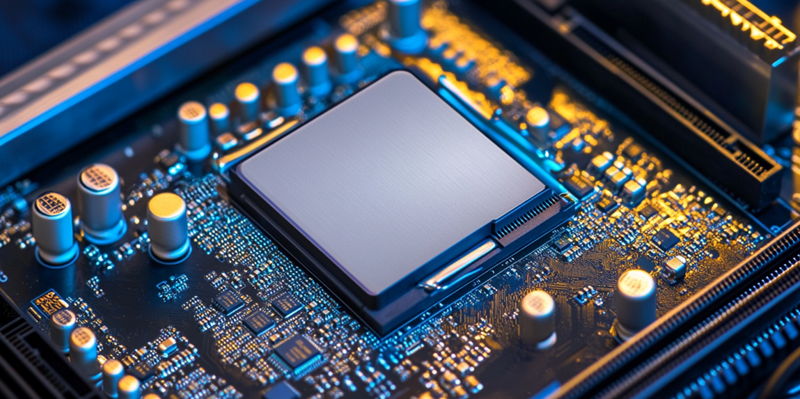Intel’s new Core Ultra 200S "Arrow Lake" series CPUs have generated significant buzz in the tech world, particularly regarding their integrated graphics unit (iGPU) performance. Utilizing the Xe "Alchemist" architecture, these GPUs represent a major step forward despite the mixed reaction to the CPUs’ general productivity capabilities. The Core Ultra 9 285K has become a focal point, featuring four Xe Cores clocked at 2000MHz and delivering commendable gaming performance at medium 1080p settings, often matching the NVIDIA GTX 1050 Ti in various benchmarks.
Despite the general productivity shortcomings of these CPUs, their iGPU performance shows a significant leap compared to previous generations. This marks a notable improvement for integrated graphics, which have often lagged behind discrete GPUs in gaming performance. For users, especially gamers, who intend to build systems without investing in separate graphics cards, the promise of decent 1080p gaming is a game-changer. The enhanced iGPU performance is achieving frame rates that are satisfactory in several popular games, including "Doom Eternal," "Skyrim," "Ratchet & Clank: Rift Apart," "Shadow of the Tomb Raider," "Fallout 4," "Overwatch 2," "Spider-Man Remastered," and "Cyberpunk 2077."
Performance and Energy Efficiency
Gaming Capabilities at 1080p
Intel’s Core Ultra 9 285K, with its powerful iGPU capabilities, shows remarkable performance in mainstream AAA games. The ability to run "Doom Eternal" and "Skyrim" at 1080p with medium settings and acceptable frame rates highlights the enhancements made in the Xe "Alchemist" architecture. Achieving such performance metrics, the iGPU presents itself as a feasible alternative for those who may not want or need a discrete GPU, especially given the escalating prices of standalone graphics cards. Additionally, games like "Ratchet & Clank: Rift Apart" demonstrate the iGPU’s efficiency and capability in handling graphically intensive scenes that were previously reserved for dedicated GPUs.
In titles such as "Shadow of the Tomb Raider" and "Cyberpunk 2077," which demand significant graphical processing power, the Core Ultra 9 285K still manages to hold its ground. Though it may not reach the high frame rates offered by discrete GPUs like the GTX 1050 Ti, it provides a playable experience for casual and semi-serious gamers alike. One crucial factor is the balance it strikes between performance and power consumption. Operating within a 50-80W range under load, these CPUs demonstrate better energy efficiency than their predecessors, which is vital in a world increasingly conscious of power use and thermal management.
Energy Consumption and Efficiency
The improvements in energy consumption cannot be understated when evaluating the Arrow Lake CPUs. Efficient power use allows the Core Ultra series to operate with lower thermal output, which, in turn, means quieter and cooler systems. This benefit is critical not only for gaming but also for users engaged in other demanding applications, like video editing or live streaming, where sustained high performance is required without the system overheating or becoming excessively loud. By staying within the 50-80W power range, Intel’s new CPUs represent an attractive option for users mindful of their energy footprint.
This remarkable energy efficiency also bodes well for mobile applications, such as laptops and ultrabooks, where battery life often hinges on the CPU’s power demands. Improved thermal efficiency and energy use can lead to longer battery life, a key criterion for portable devices. For consumers who value both performance and efficiency, the Core Ultra series offers a robust solution. While it may not outright outperform AMD’s Ryzen 8000G series, it narrows the gap significantly in the realm of iGPUs, showing promise for future development in integrated graphics technology.
Comparison with AMD’s Ryzen 8000G Series
Relative Performance
Despite the enhancements in Intel’s iGPU performance, the Core Ultra 200S series still lags behind AMD’s Ryzen 8000G series. AMD has long been recognized for its advanced integrated graphics solutions, and the Ryzen 8000G series continues to uphold that reputation. Delivering superior gaming performance at a lower price point, AMD remains the go-to choice for gamers seeking high performance without the additional expense of a discrete GPU. While Intel’s Core Ultra 9 285K showcases respectable advancements, AMD’s offerings manage to squeeze out a bit more power and flexibility from their integrated GPUs.
The Ryzen 8000G’s superior performance, particularly in graphics-intensive scenarios, means Intel’s iGPU still has room for improvement. Comparatively, users might find AMD chips offer more bang for their buck, especially for those on a budget or requiring higher graphical fidelity for their games and applications. However, Intel’s advancements should not be overlooked. The Xe "Alchemist" iGPU has closed the gap, making AMD and Intel’s competition fiercer and pushing further innovation in future CPU releases.
Budget Alternatives within the Core Ultra Series
Intel’s new Core Ultra 200S "Arrow Lake" CPUs are making waves in the tech world, especially for their integrated graphics unit (iGPU) capabilities. Using the Xe "Alchemist" architecture, these GPUs show significant progress even though the CPUs have received mixed reviews for general productivity tasks. The spotlight is on the Core Ultra 9 285K, boasting four Xe Cores running at 2000MHz, which delivers impressive gaming performance at medium 1080p settings, often rivaling the NVIDIA GTX 1050 Ti in various benchmarks.
While these CPUs may fall short in productivity, their iGPU performance marks a considerable upgrade from previous generations. This improvement is crucial for integrated graphics, which have historically lagged behind dedicated GPUs in gaming. For gamers and users who prefer not to buy separate graphics cards, the ability to enjoy decent 1080p gaming is transformative. The iGPU’s enhanced performance delivers satisfying frame rates in several popular games like "Doom Eternal," "Skyrim," "Ratchet & Clank: Rift Apart," "Shadow of the Tomb Raider," "Fallout 4," "Overwatch 2," "Spider-Man Remastered," and "Cyberpunk 2077."

